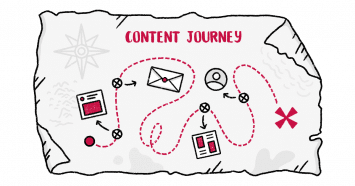How to create a great SaaS Newsletter (+6 Examples)

As a SaaS business founder, I know you have many things to worry about – the last thing that might come to mind, though, is probably your company newsletter. Don’t be ashamed by it. Many SaaS companies make the mistake of not taking the appropriate time to invest in a good weekly newsletter.
The benefit of using an email newsletter over traditional “salesy” emails can be overlooked, but it’s significantly better than sales-based email blasts. The best word I can think to sum the email being filled with the latest industry news is, in fact, value.
These emails are designed to educate and inform your audience with relevant content and industry insights while simultaneously allowing you to develop a connection between your Saas company and your subscribers over time.
Did you know that more than 50 percent of U.S. respondents check their personal email account more than 10 times a day? (and that it is by far their preferred way to receive updates from brands.)
‘So how can I make these connections?’ you ask.
You can think of this process, kind of like dating. By this, I mean, for example, you’d never ask for someone’s hand in marriage before you proved yourself trustworthy and reliable.
Your email newsletters are like little casual dates; It’s just one more (reoccurring) chance for you to show your worth and value to your subscribers.
It’s also a great way to stay top of mind for your prospects. You see… often when you capture a lead on your blog with an eBook, a Webinar, or any other lead magnet, the user might be interested enough to subscribe to your newsletter… but not yet ready to buy your SaaS product.
That’s exactly what we experienced with AdEspresso. We had amassed over 500k readers for our newsletter. The very fact they subscribed to get our insights qualified them as potential buyers. But they were not ready to buy yet.
By staying top of mind for them with a great newsletter, we set up the business for success. When the right time arrived for them to buy an advertising product, we were the first product they remembered.
Of course, for this lead nurturing process to work, your newsletter should be great, and its primary focus should be giving value to your reader. Think of it as a learning hub delivered over email. You’ll know you’re on the right track when you start receiving emails like this:
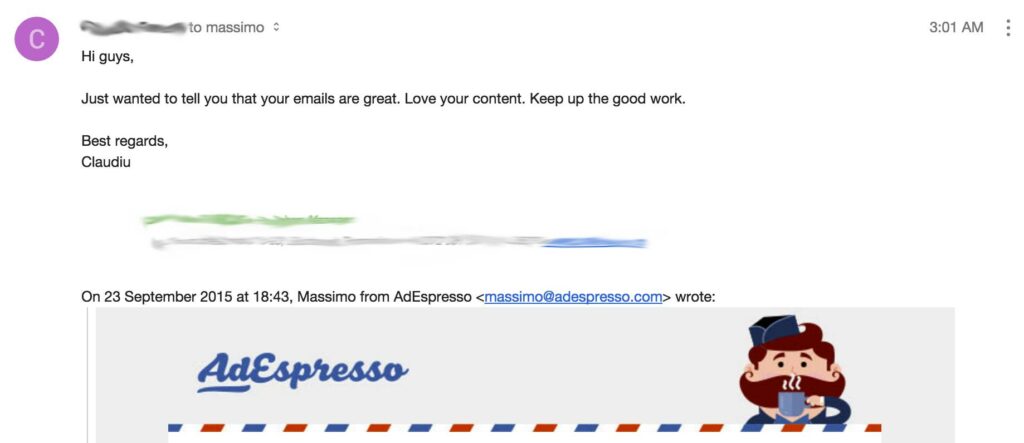
This means that an email newsletter is not just an offhand idea; it’s a necessity in today’s digital marketing landscape and should be part of every b2b SaaS marketing plan.
Components of a Great SaaS Newsletter
Starting your own newsletter can seem daunting to those who are new to email marketing. Before I get to the examples, I will take a moment to identify the main components of what your newsletter should have.
Subject Line and Preview Text
By far, the first and most important part of your newsletter will be the subject line. If it’s not intriguing enough, your subscribers won’t even open it, and all the time spent creating and maintaining your SaaS newsletter will all go to waste.

Do:
- Explain what your reader will find in the newsletter (topics, etc.)
- Remember to keep subject lines brief but engaging.
- Dabble with adding emoji – 56% of brands say that adding an emoji increased their open rates. Don’t abuse them, though. Too many emojis, and you’ll look unprofessional.
Don’t:
- Rely on preview text to convey the message – Keep it concise and mobile-friendly; your message can cut this off significantly across smartphones and tablets.
- Use a generic subject line like “123Company’s Newsletter.”
Body
Everyone needs a body, and your email newsletter is no different. The obvious difference between an email blast and a newsletter is the total amount of content and topics they contain. While your email blasts should be concise and centered around one subject with one Call To Action, your email newsletters are actually the opposite.

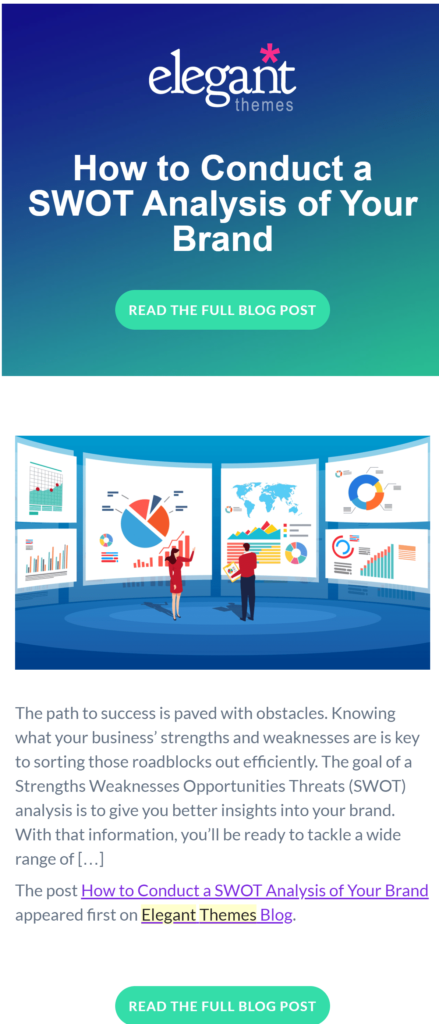
While some studies say that newsletters with 200 words or less have the best click-through rates, you should consider your subscribers’ habits to determine the appropriate length. Are they busy working moms on the go with only their mobile phone and 3 minutes to spare, or are they data analysts looking for a long and thorough weekly digest?
If you’re having trouble filling all of the space in your newsletter, you can also share relevant and credible links from other blogs that your audience may find appealing. Additionally, you can highlight events your company is participating in or upcoming webinars and free resources.
Do:
- Some research on your audience to see what topics would be of most interest to them.
- Experiment with length, topics, and format until you get it right.
- Use images to spotlight specific articles of interest
Don’t:
- Fill your newsletters with too many ads or sponsored content. You don’t want to have a reputation for a spammy or clickbait-y newsletter.
Footer
The footer is the very end of the email – which can be as important as the beginning. Here is your chance to encourage sharing.

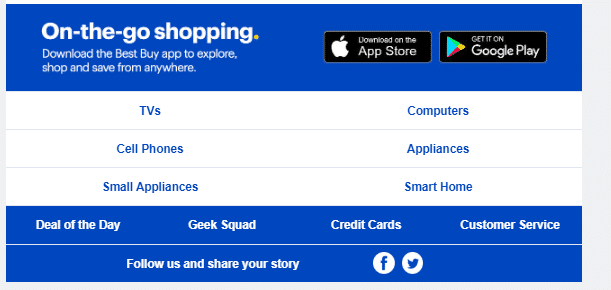
Do:
- Ensure you give users the ability to unsubscribe from emails (it’s the law!)
- Add links to your social profiles to encourage likes/follows/shares
- Links to your blog, website, and relevant content
Don’t:
- Add anything overly complicated. Keep your footer brief and to the point.
How to create engaging SaaS newsletters
Now that we’ve learned a bit about the fundamentals of email newsletters and what they can entail, it’s time to see how the pros do it. Here are our top 5 SaaS newsletters examples to spur your own startup newsletter ideas.
1 – Know Your Audience
Most business owners expect that building the email newsletter itself is the hard part – but in reality, the hard part is figuring out what to put in the newsletter. If you want to avoid a high unsubscribe rate, you first want to know your subscribers and what they want to know more about.
While every business should conduct research to know their buyer personas and what each stage of the inbound funnel looks like, sometimes startups don’t have the time or resources needed to conduct this out of the gate. The easiest way to get some of this information is to add questions to your subscription form to gather essential data about your audience.
Some common examples can include industry, number of employees, what they’d like to hear about, their biggest challenge, and company. This is all valuable quantitative data that you can use to create your own buyer persona in the future.
You can also conduct competitor research for ideas about your audience’s interests in the short term, which can also help to frame your overall content marketing strategy.
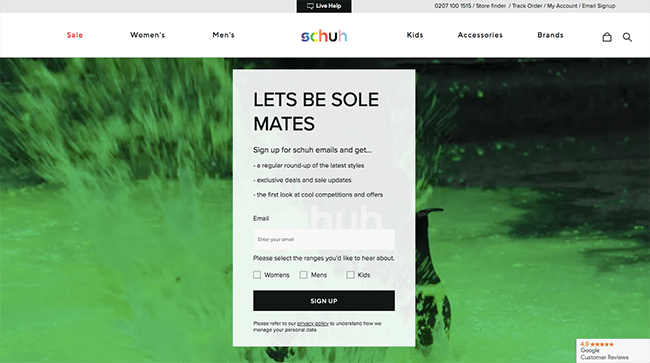

Do:
- Take time to poll your audience to ask what they’d like to hear more about once you have a significant chunk of subscribers. This can help make your email newsletters more engaging and also help guide you towards what kind of content you should be creating on your blog.
- Personalize the newsletter for your audience. If you asked what they’d like to hear more of, make sure the content is relevant to their selection. Use the audience segmentation options of your CRM to create different versions of your newsletter to increase open and CTR.
- Send your SaaS newsletter for a real email address, read replies and proactively ask readers what’s working and not working with your content.
- Newsletters are just one of the many components of B2B SaaS Marketing. Leverage insights from your blog and learning hub to understand what your audience is more interested in.
Don’t:
- Make your form too long. Keep it within 5 questions max. Otherwise, you run the risk of users bouncing off the page entirely.
- Ask irrelevant questions. If you don’t need to know the shoe size of your audience to create a buyer persona, don’t ask it!
Set a plan: Content Curation is excellent for newsletters. Focus on Highlighting other great posts, webinars, etc., that are outside of your blog. It will make you look independent, and it will help reinforce the idea that you’re not just selling but honestly trying to help users with the most useful content.
Highlighting other’s work is also a great way to increase your network. Never miss the opportunity to make connections with the people your mentioning or the saas product you mention.
2 – Send a Welcome Email
Much like a good handshake, the perfect welcome email can go a long way to ensuring your first interaction with your subscriber is a positive one. While all of the above tips we covered in the ‘Components of a Great SaaS Newsletter’ section apply here, there are a few notable differences in creating your welcome email.
Since this is theoretically the first email subscribers will receive from you, it’s essential to make it good. In this email, you want to set clear expectations of what the user will receive and when and give them some juicy content upfront so they don’t have to wait.
In addition, you can also use this chance to tell users how to whitelist your emails. Whitelisting is the term for when a person adds you to their address book to ensure they receive your email in their inbox. This leads to enhanced delivery for you, and your emails are top of mind for them – a win-win!
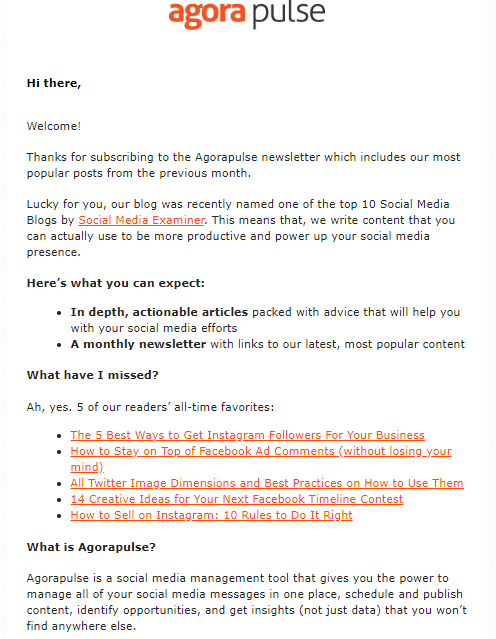

Do:
- Set clear and honest expectations for what they will receive and when.
- Give them the ability to share it with their friends or colleagues.
- Encourage them to add your email to their contacts or drag the email into their primary folder.
- Make it easy to share with other people. Word of mouth is so valuable. The more people who see it, the more who might subscribe, more potential customers, more growth.
Don’t:
- Make your subscriber wait. Give them a dose of some of your best content upfront to get them started. The GrowthHackers welcome email is an excellent example of this.
- Make a pitch right out of the gate. Like we stated earlier, you don’t want to ask for marriage on a first date. Doing so can cause a high unsubscription rate off the bat.
- Make it too ‘salesy.’ It’s ok to promote your company, but you should use it for highlighting your useful blog posts and content; maybe after that, you can slip in a bit of direction to your product, but still, it’s best it’s non-intrusive and at the end. (The exception to this is unless it’s a special time-limited promo.)
My suggestion is to Go niche before going broad. I tend to disengage quickly from newsletters that get too broad and cover too many topics, even when they are within the same industry. I usually tend to stick to reading newsletters that cover a very specific topic with useful news, tips, and insights.
While you start out focused, you can kick it up a notch once you have strong brand awareness. After you’ve built your brand up, you can get a bit broader, but do it gradually and monitor the open and click-through rates. You want to be sure you’re not losing the audience, you want growth, and you want people to subscribe.
3 – Deliver Great Value
No matter if you’re planning content for your website or SaaS Newsletter, in the end, what’s going to make or break your newsletter is the value you deliver to your audience.
Deliver useless content or be too aggressive trying to sell your product, and not only you’ll lose subscribers, but you’ll also damage your brand and growth opportunities.
It’s up to you to understand the best format for your newsletter; some companies send super short ones highlighting just their latest post. Others send super long ones where most content can be consumed directly in the email without jumping on the website.
Different industries and brand positioning usually require different approaches. Here’s a list of all the most common ingredients you can mix & match to deliver a great weekly newsletter:
- Highlights with links of your top blog posts
- Curated content with links to the top posts published in your industry
- Events highlights if you’ll be at trade shows or organizing your own event
- Top news that is very time-sensitive related to your niche
- Evergreen learning resources
- Editorials with your very personal view on the industry
- Software updates whenever there’s a major release of your product
- Marketing messages: Special promos, partnerships announcements, and so on
- Community highlights. If you have a very active community, you can highlight forum threads or relevant tweets/posts in your Facebook group
- Free and exclusive resources like early access to new ebooks or webinars just for your community
Do:
- Check your metrics often. Try to find the correlation between what you’ve sent and unsubscribed rate, click-through rate, and open rate.
- Experiment with your content mix. Try different approaches and see how your users react to them. It’s ok to highlight that a specific issue of your newsletter is an experiment and ask readers for feedback.
- Monitor Twitter threads to spot high-quality, low-exposure content that you can curate. Don’t always share the most well-known websites; your audience likely already follows them.
Don’t:
- Send your newsletter from noreply@company.com. It sucks and shows your audience you’re not open to getting their feedback.
- Try to pack your newsletter with all the above elements every time. Have some standard sections of your email like your top blog post & curated news. Use the other elements as needed only when there are meaningful events you want to highlight or important updates on your software.
- Wear the marketer hat all the time. That’s ok if your audience is composed of other marketers. Otherwise, you should put yourself in your audience’s shoes and really figure out what’s interesting for them, not for your company’s growth.
- Hide relevant industry news because they don’t align well with your product. People will stop trusting you. In AdEspresso we’d always highlight a new Facebook Ads feature that was useful for our readers, even if our own tool was not yet ready to support it.
4 – Be Consistent
The last factor here may seem obvious, but it’s key to creating SaaS newsletters that users will be excited by every time they see it in their inbox.
CampaignMonitor suggests that you should send no more than two newsletters a week for best results, but in all reality, how many newsletters you send per month should ultimately depend on what you can deliver.
Never sacrifice quantity over quality – if you can only release one newsletter per month, make sure to make that newsletter packed with valuable content that your audience will find irresistible.
Always remember Consistency > frequency.
It really doesn’t matter if you send out a weekly newsletter or a monthly newsletter. What matters is consistency. Your readers should know exactly when your newsletter will land in their inbox. Disappear for three months, and your open rate will drop dramatically when you restart.
My suggestion is to start slow, to get used to it. Too many SaaS companies begin with a very aggressive goal in their marketing plan and fail to deliver consistently. Avoid this trap at all costs! I think it’s good to start with once per month then increase the frequency gradually, so you know you can keep sending consistently at that pace.
Personally, I don’t believe in things like limiting your newsletters, There’s no such thing as too many or too few for me, but it’s all about how valuable your content is.
Suppose your content is focused, useful and educational. In that case, I’m happy to receive it as a weekly newsletter, or even find it in my inbox daily, but still, If your content is poor quality, gimmicky self-promotional, even once a month is already too much.
5 – Create a Viral Loop [Bonus]
I’ve got a little bonus advice for you. Feel free to ignore it until you get to at least some thousand newsletter subscribers or your SaaS brand is very well known and loved in the space.
While referral programs don’t often play a significant role in SaaS marketing to sell your main product, they can effectively grow your mailing list.
Big newsletters like The Morning Brew owe a large part of their explosive growth to referral programs.
The approach is straightforward. Create something your readers might be interested in, like special gated content, t-shirts, gadgets, etc. Create a referral program where every X number of people subscribe to your newsletter they refer they win something.
Then promote it at the end of each newsletter episode you send out like this:

Now sit down, enjoy a coffee and watch your metrics explode.
I’m just kidding. It’s not that simple. You’ll need a kick-ass newsletter that is worth sharing and prizes that people will actually want. And to answer what you’re thinking right now: No, most of the time, a t-shirt with your company logo is not what they want.
Be creative, find gifts that you can produce and distribute at scale with little effort and relevant only for your audience. (No Amazon gift cards or similar generic prizes!) They would work very well but attract anyone and their sisters.
You can get some tips on how to pick the right prizes on my post about Instagram giveaways. More or less the same rules apply. Here you’ll need to be more cautious about the cost because you’ll not pick a random winner but you’ll send something to anyone who refers enough users.
Creating such programs is quite simple nowadays, and there are specific tools. Just to name a couple: SparkLoop and Viral Loops. Yeah… creative names, I know ;)
SaaS Newsletter Example #1 – Wootric

The words’ Customer Experience’ haunt the dreams of most SaaS business owners, and for a good reason. One study reported that CX is likely to become the most influential factor in your customer’s minds when they decide which product they’re going to stick with. Enter Wootric.
Wootric’s CX roundup contains all the topics you need to keep abreast about to stay in the game with the latest insights, trends, and innovations in the world of customer experience.
What we love most
The CX Roundup always has a variety of different types of media included – any newsletter will have links to relevant articles (text), podcasts (audio), and even links to webinars (video). Since many people prefer different types of content, Wootric ensures it has something for everyone all in one place.
Update: Since we originally wrote this article, Wootric has been acquired and their awesome newsletter is no more.
SaaS Newsletter Example #2 – ProfitWell

Profitwell’s blog and newsletter are an absolute goldmine of relevant statistics for a SaaS business owner. Need to know about how to reduce churn rates? What about user experience metrics? B2B lead generation strategies? Check, check, and check.
What I love most
I’m not mincing words with this one – the number one thing to adore about Profitwell is the data they provide. While those new to SaaS marketing might have their heads full to the brim with acronyms they can’t understand, Patrick Campbell and his team do an effortless job of uncomplicating the complicated.
SaaS Newsletter Example #3 – Wistia
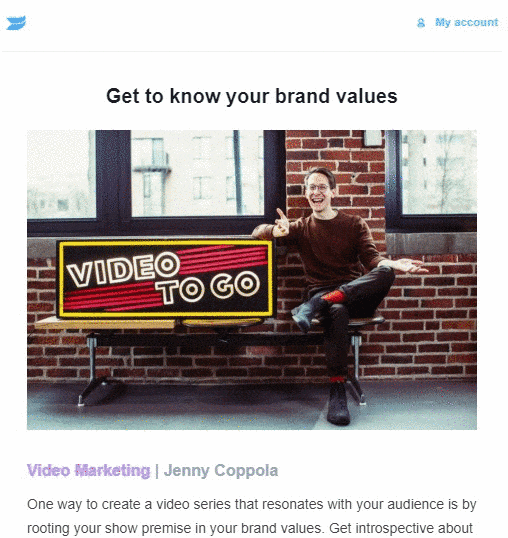
Wistia’s weekly content roundup is integral for SaaS marketers who plan on using video in any part of their business. While most may think of sales videos, the fundamentals shared through this newsletter can also be applied to things like product tutorials or demos- something every SaaS owner will need to create at some point.
What I love most
Wistia stays true to its niche. While some newsletters can be filled with content that it can hardly describe as related, Wistia does a fantastic job of keeping their general theme – using video in marketing – while addressing the topic from every possible angle with relevant content from their site and others.
SaaS Newsletter Example #4 – Zapier
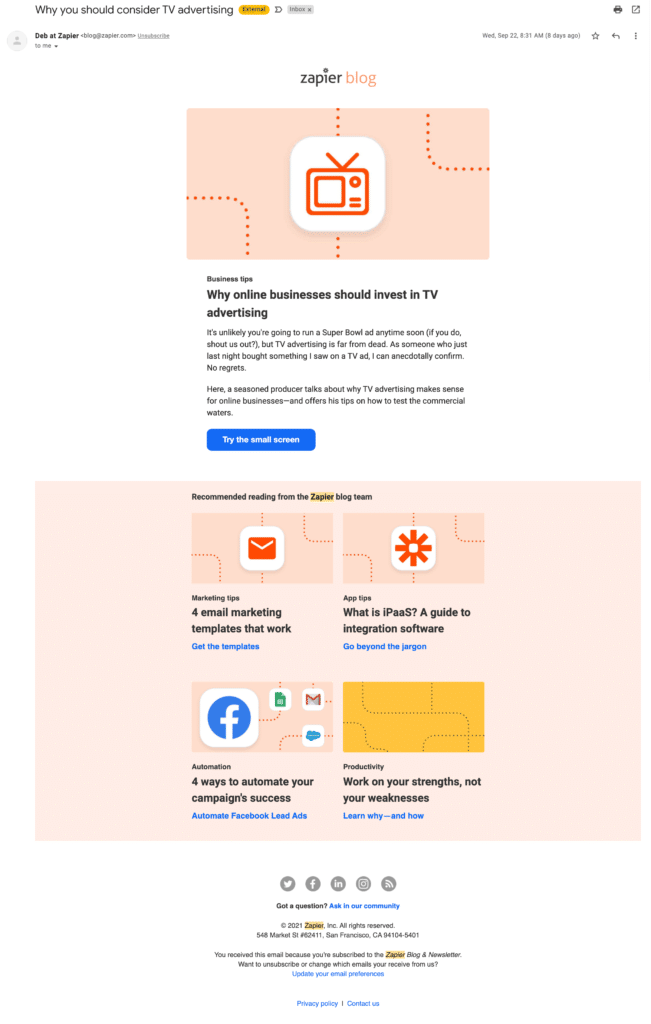
Zapier is one of the most loved tools to sync different apps via API. They’re also a great example of consistency; every seven days, I’m sure I’ll receive their mail in my inbox with some exciting content.
The mail is 100% based on their blog’s content. One article is featured at the top of the page, with secondary ones linked below in a very compact way.
They could probably expand it a bit with more curated content, but it’s likely too complex because of the very different use cases they serve. It would be tough to find a specific niche to curate.
What I love most
It’s not a newsletter I read very often, but their subject lines are always intriguing and the design is super clean. They make my life easy to quickly catch up with what they’ve published and decide if there’s something I want to read more in-depth.
One final element, the sender is a real person, not just a company name. I think it’s effective to put a name on a newsletter, it adds a personal touch.
SaaS Newsletter Example #5 – Morning Brew
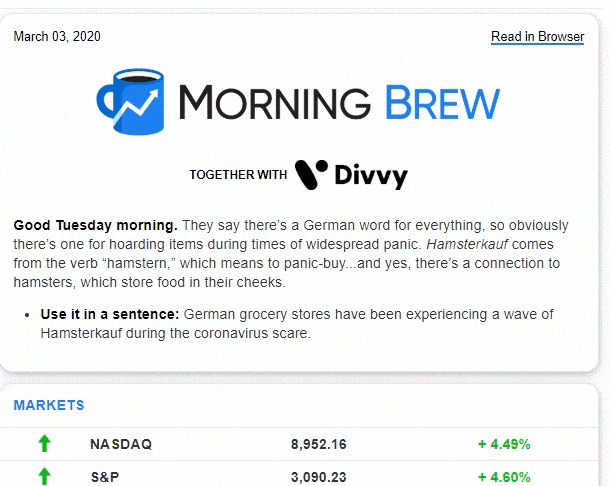
While Morning Brew isn’t technically a SaaS newsletter, it can be great for SaaS marketers as it encompasses a wide array of relevant market concerns. From retail shopping trends to stock updates and investment news, and even a fun crossword or two, Morning Brew takes the cake when it comes to most topics covered in a single email.
Suppose you’re looking for something a little more niche. In that case, they have several topic-specific newsletters such as Emerging Tech Brew for tech news, Retail Brew for industry trends, and The Turnout for an intersection of politics and business.
Whatever your needs may be, Morning Brew has a newsletter for it.
What I love most
Morning Brew does best to distill the information in the article linked and explain its relevance before you click. In an age of clickbait, this is a welcome and refreshing strategy to email newsletters.
SaaS Newsletter Example #6 – Moz

Moz is a cherished brand in the SaaS space, and they’ve focused their newsletter on curating content since the beginning. You know what you’ll get from the get-go: Moz Top 10. Each email will deliver you the top 10 posts in the SEO niche.
Lately, they’ve been a bit inconsistent with delivering the newsletter, but that’s what happens when you get acquired.
What I love most
The format is very clean, and users don’t need to think or browse through different mail sections. The summary of each post is good enough to let me decide if I want to click and read it or not. They also show me how much they care about the community. While one post out of 10 is usually from their own website, they’re not scared of recommending posts from direct competitors if they are worth reading.
Closing Title
Now that we’ve given you 5 great examples of SaaS newsletters, it’s onto the fun part – creating your own! Here are 3 tips you need to implement in your email newsletter strategy.
In this article, I’ve covered what an email newsletter comprises, shared my top 5 Saas email newsletter examples, and gave you 3 tips you need to implement to make your newsletter strategy on point.
Do you have any favorite SaaS newsletters we haven’t included? Let me know in the comments below!
